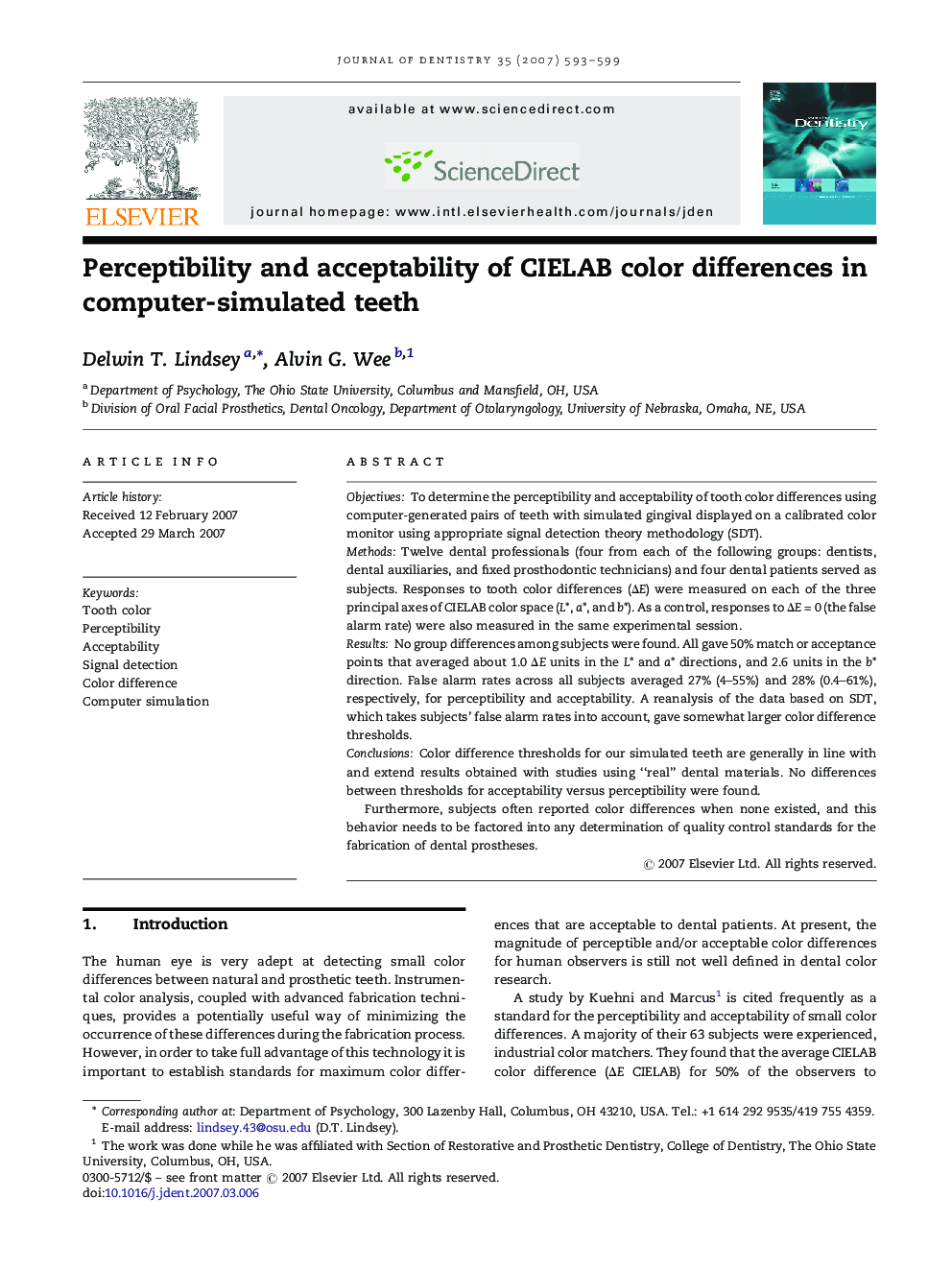| Article ID | Journal | Published Year | Pages | File Type |
|---|---|---|---|---|
| 3145676 | Journal of Dentistry | 2007 | 7 Pages |
ObjectivesTo determine the perceptibility and acceptability of tooth color differences using computer-generated pairs of teeth with simulated gingival displayed on a calibrated color monitor using appropriate signal detection theory methodology (SDT).MethodsTwelve dental professionals (four from each of the following groups: dentists, dental auxiliaries, and fixed prosthodontic technicians) and four dental patients served as subjects. Responses to tooth color differences (ΔE) were measured on each of the three principal axes of CIELAB color space (L*, a*, and b*). As a control, responses to ΔE = 0 (the false alarm rate) were also measured in the same experimental session.ResultsNo group differences among subjects were found. All gave 50% match or acceptance points that averaged about 1.0 ΔE units in the L* and a* directions, and 2.6 units in the b* direction. False alarm rates across all subjects averaged 27% (4–55%) and 28% (0.4–61%), respectively, for perceptibility and acceptability. A reanalysis of the data based on SDT, which takes subjects’ false alarm rates into account, gave somewhat larger color difference thresholds.ConclusionsColor difference thresholds for our simulated teeth are generally in line with and extend results obtained with studies using “real” dental materials. No differences between thresholds for acceptability versus perceptibility were found.Furthermore, subjects often reported color differences when none existed, and this behavior needs to be factored into any determination of quality control standards for the fabrication of dental prostheses.
